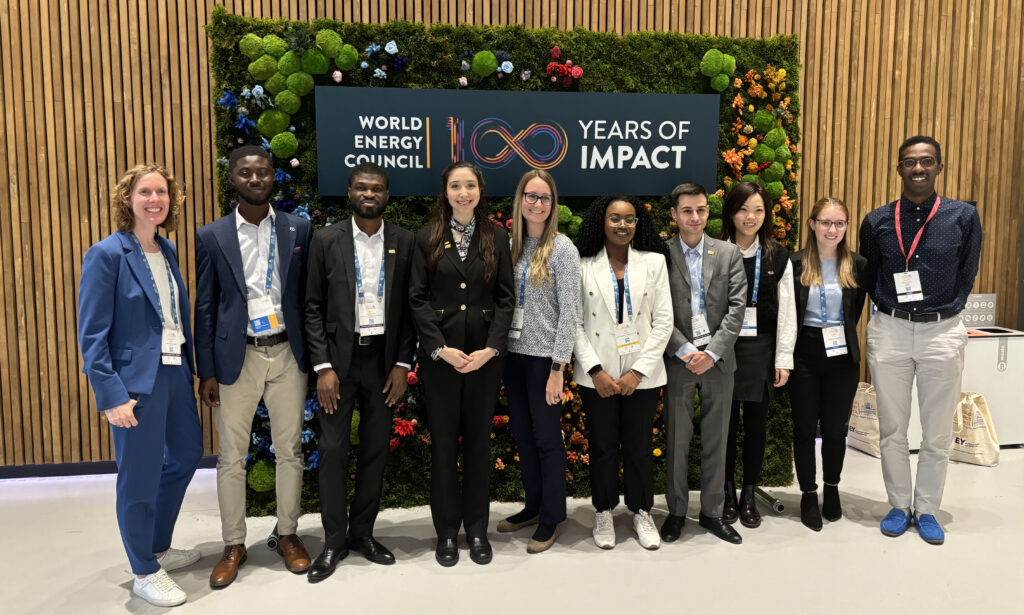Balancing the Interdependent Energy Transition and AI Revolution from an International Energy Policy Lens
By Margaret Brown
Dept. of Materials Science & Engineering, University of Pennsylvania
NRT Soft AE Trainees
Published July 3, 2024
For my immersive experience, I attended the 26th World Energy Congress (WEC) in Rotterdam, the Netherlands. The World Energy Council hosts the Congress approximately every three years, with 2024 being the 100-year anniversary of the 1st WEC. Unlike most conferences I would attend as a graduate student, the WEC does not involve individual presentations by graduate students or professors on focused topics. Instead, each day consisted of discussion panels on a variety of energy-related topics with networking breaks between each panel. The attendees came from over 100 countries with speakers including executives, ministers, and other similarly influential members of the energy sector. A sentiment repeated throughout the week was that while most of the world is undergoing an energy transition, the meaning of this transition depends on the region. In developed countries this transition is the move towards decarbonization, but in developing countries it means bringing widespread energy access to the 2 billion people who do not currently have access to electricity. Therefore, energy discussions must work towards solutions for both transitions without rushing developing countries to adopt solutions that would hinder their growth.
I was introduced to the World Energy Council and given the opportunity to attend the Congress by Justice Ohene-Akoto, a classmate of mine and a member of the Council’s Future Energy Leaders Board. The Future Energy Leaders are a group of young professionals that have shown influence and leadership in the energy sector. Mr. Ohene-Akoto has drafted a climate change negotiation simulation where participants act as developed countries, developing countries, NGOs, and the private sector. Participants work together to pass climate legislation. A group of classmates and I ran two trial runs of the simulation at Penn. I joined a group of the Future Energy Leaders in Rotterdam at the WEC to run a trial to provide additional feedback.
As an engineer, it was initially instinctive to look at each piece of legislation in isolation and weigh each one methodically based on its net benefits to each party. However, this line of thinking leads to beneficial climate legislation being rejected because it goes slightly against the interest of a crucial voting party. It is easier to make progress and maintain positive relations by considering all of the pieces of legislation first to find points of common ground, as well as the opportunities to bundle potentially contentious legislation in a way that protects each party. The simulation is a useful tool for demonstrating how small concessions in the name of collaboration can be leveraged to provide a net benefit for all parties involved while prioritizing the energy transition.
Given the AI focus of the NRT Soft AE Program, I was eager to attend the panel on the role of AI in the energy transition. Discussions around AI energy policy are complex because AI is simultaneously a source of rapidly increasing energy demand and a tool to aid in the energy transition. All of the speakers agreed that AI is a net opportunity for the energy sector, though they had varying levels of caution.
Mr. Arshad Mansoor, President and CEO of the Electric Power Research Institute, made the compelling argument that the limiting factor for the next generation of AI is the amount of energy required for it. Even now, the rate at which some data centers consume energy is increasing faster than their grids can keep up with. Mr. Mansoor also pointed out that data centers that do not adjust their operations throughout the day to accommodate other demands on the grid are beginning to affect local communities by consuming enough electricity to strain the grid during peak demand. Another panelist, Dr. Yashar Ghiassi-Farrokhfal, Professor at the Rotterdam School of Management, implied that some companies are using AI indiscriminately. He said that value and opportunity, rather than novelty, should determine when AI is used.
Some take homes from the panel that I thought were important to share follow. While AI’s energy demand is and will continue to be a difficult challenge, it may encourage clean energy deployment. Communicating the hidden energy consumption of AI to the public is an important step. Strong policy also will be necessary to prevent this new resource from being used wastefully.
Attending this panel and the WEC have reminded me how privileged the members of our NRT Soft AE are to have access to AI as a tool. We should continue to consider the value that it adds relative to the energy it uses in our own projects.


